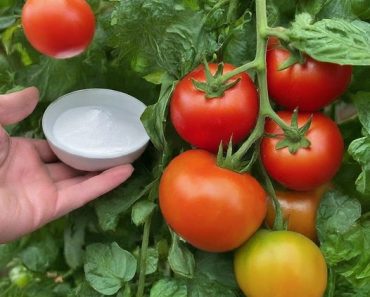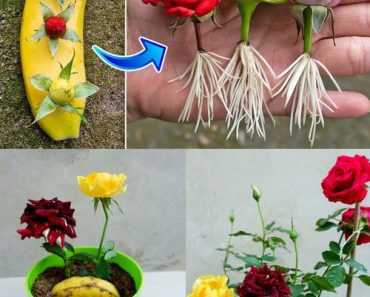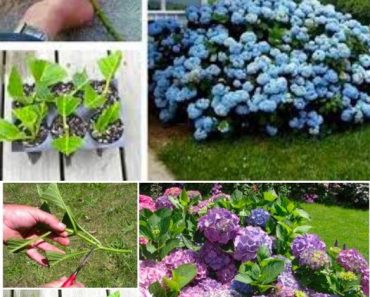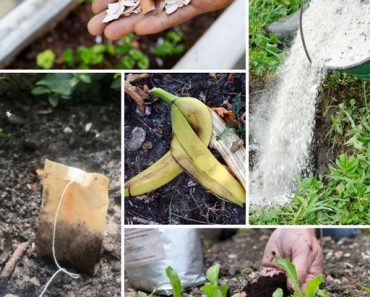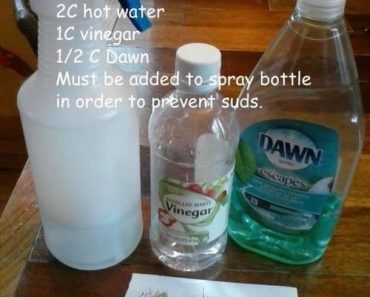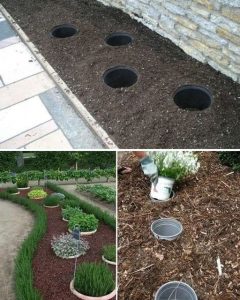
The Pot-in-a-Pot Method: A Gardener’s Secret for Versatility and Beauty
Hello, fellow gardeners! 🌿 Today, I’m excited to share with you a fantastic gardening technique that will transform the way you manage your plants: the Pot-in-a-Pot method. This simple yet ingenious strategy offers flexibility, convenience, and aesthetic appeal to your garden. Let’s dive in!
Why Use the Pot-in-a-Pot Method?
The Pot-in-a-Pot method involves burying containers in the ground and inserting other containers with plants into them. This approach provides numerous benefits, making your gardening experience more enjoyable and efficient.
Key Benefits:
- Seasonal Flexibility:
- Easily change out annuals to keep your garden vibrant and colorful throughout the summer.
- Experiment with different plant arrangements and lighting requirements without disturbing the soil.
- Continuous Blooms:
- Maintain a continuous display of blooms from spring through fall by swapping out plants as needed.
- Indoor-Outdoor Transition:
- Move houseplants to outdoor beds during the summer and back indoors for the winter, allowing them to thrive year-round.
- Stability and Protection:
- Secure plants in the ground, protecting them from wind and other elements.
- Easy Replacement:
- Quickly and effortlessly replace dead or struggling plants without disrupting your garden’s layout.
- Controlled Environment:
- Better control over temperature, fertilizer, and water, leading to healthier and happier plants.
Ingredients Overview
Before we get started, let’s gather our ingredients. For the Pot-in-a-Pot method, you will need:
- Outer Pots: These should be durable and slightly larger than your inner pots. Terra cotta or heavy-duty plastic pots work well.
- Inner Pots: These are the pots that will hold your plants. Ensure they fit snugly into the outer pots.
- Quality Soil: Use well-draining soil suitable for the specific plants you intend to grow.
- Fertilizer: Choose a balanced fertilizer to support plant health.
- Watering Can or System: Ensure you have a reliable method for watering your plants.
- Gardening Tools: Shovel, trowel, and gardening gloves for easy planting and maintenance.
Step-by-Step Instructions
Let’s walk through the process of setting up your Pot-in-a-Pot garden:
- Select Your Location:
- Choose a spot in your garden that receives the appropriate amount of sunlight for your plants. Ensure the ground is level and well-drained.
- Prepare the Outer Pots:
- Dig holes in the ground slightly larger than your outer pots. The top rim of the pots should be level with the ground surface.
- Place the outer pots into the holes and fill any gaps around the sides with soil to secure them in place.
- Prepare the Inner Pots:
- Fill your inner pots with quality soil, leaving enough space at the top for watering.
- Plant your chosen flowers, herbs, or vegetables in the inner pots according to their specific planting requirements.
- Insert the Inner Pots:
- Carefully place the planted inner pots into the outer pots. Ensure they fit snugly but can still be easily removed.
- Water and Fertilize:
- Water the plants thoroughly and apply fertilizer as needed. The outer pots will help retain moisture, reducing the frequency of watering.
- Maintenance:
- Regularly check your plants for signs of stress or pests. Replace any struggling plants with new ones to keep your garden looking fresh and vibrant.
Valuable Tips for Seamless Gardening
- Label Your Pots: Use plant markers to label your inner pots. This will help you keep track of different plant varieties and their care needs.
- Monitor Moisture Levels: Use a soil moisture meter to ensure your plants are getting the right amount of water.
- Seasonal Adjustments: Adjust your watering and fertilizing schedule based on the season and the specific needs of your plants.
- Protect Against Pests: Use natural pest repellents or barriers to protect your plants from common garden pests.
Frequently Asked Questions (FAQs)
Q1: Can I use any type of pot for the Pot-in-a-Pot method?
- A1: While you can use various types of pots, it’s best to choose durable outer pots that can withstand outdoor conditions. Inner pots should fit well and be easy to remove.
Q2: How often should I water the plants in the Pot-in-a-Pot system?
- A2: Watering frequency depends on the plant type and weather conditions. Check the soil moisture regularly and water when the top inch of soil feels dry.
Q3: What types of plants work best with the Pot-in-a-Pot method?
- A3: Most annuals, perennials, herbs, and even some vegetables can thrive in this system. Experiment with different plants to see what works best in your garden.
Q4: Can I use the Pot-in-a-Pot method in raised beds?
- A4: Absolutely! The Pot-in-a-Pot method works well in raised beds, providing the same benefits of flexibility and ease of maintenance.
Q5: How do I handle plants during the transition between indoors and outdoors?
- A5: Gradually acclimate your plants to outdoor conditions by placing them outside for a few hours each day, increasing the time over a week or two. Reverse the process in the fall.
By embracing the Pot-in-a-Pot method, you’ll enjoy a more versatile, manageable, and beautiful garden. Happy gardening!
This customized blog post aims to resonate with gardeners, offering detailed guidance and practical tips to enhance their gardening experience
